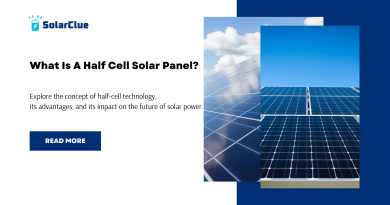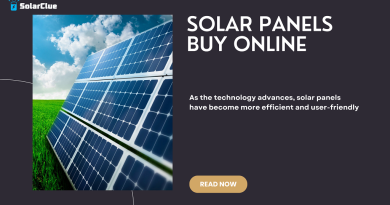What can we do to increase the efficiency of solar photo voltaic panels?
Efficiency of Solar photo voltaic panels: Most solar panels available today claim an average efficiency of 16%. This efficiency measures the percentage of light they capture versus the total light they receive. Scientists measure light energy in photons or electron volts (eV).
Table of Contents
- 1 Why Are Solar Cells Limited to 16% Efficiency?
- 2 The Role of Photon Energy
- 3 Spectrum of Capturable Light
- 4 Composition of Sunlight on Earth
- 5 Understanding the Electromagnetic Spectrum
- 6 The Real Reason Behind Low Solar Panel Efficiency
- 7 Potential Avenues for Improved Efficiency
- 8 Can We Capture UV Rays?
Why Are Solar Cells Limited to 16% Efficiency?
Let’s explore the reason behind Efficiency of Solar photo voltaic panels limitation.
Solar cells in the current market use a semiconductor called Silicon. When light strikes this semiconductor, it knocks electrons out of the outer shell of silicon atoms. These electrons then travel through the silicon sandwich circuit, producing electricity.
The Role of Photon Energy
An electron only gets knocked out when a photon carrying 1.1eV hits it. Photons with less than 1.1eV don’t have enough energy to move the electron, and those with more than 1.1eV typically convert into heat instead of helping generate electricity. This heat reduces the panel’s overall efficiency.
Spectrum of Capturable Light
Photons with 1.1eV energy fall within a narrow band of the electromagnetic spectrum, mostly visible light between 400nm and 1100nm wavelengths. However, sunlight contains more than visible light. It includes ultraviolet, visible, and infrared light.
Since solar panels only capture a small part of the sunlight spectrum, their efficiency remains limited.
Composition of Sunlight on Earth
Sunlight that reaches Earth’s surface includes:
- 50% infrared (above 700 nm),
- 40% visible (400 to 700 nm), and
- 10% ultraviolet (below 400 nm).
Ultraviolet light ranges in energy from 3 eV to 124 eV.
Understanding the Electromagnetic Spectrum
To fully grasp this limitation, we need to examine the electromagnetic spectrum.
Shorter wavelength electromagnetic waves carry more energy than longer wavelengths. That’s because energy is inversely proportional to wavelength and directly proportional to frequency. Scientists calculate this energy in electron volts using the equation:
E = hv = hc/λ
Where:
- h = Planck’s constant
- v = frequency of light
- c = speed of light
- λ = wavelength of light
The Real Reason Behind Low Solar Panel Efficiency
This study shows that one major reason for low Solar panels efficiency —aside from unavoidable technical losses—is the narrow spectrum of light we can currently harness.
Potential Avenues for Improved Efficiency
To capture more solar energy, we can explore two promising paths:
- Find ways to capture UV rays
- Find ways to capture infrared rays
Can We Capture UV Rays?
Although there’s no clear method yet, we can look to nature for inspiration.
The Earth’s O2 layer captures many harmful UV rays, protecting us. When UV rays hit oxygen molecules, they split them into reactive oxygen atoms. These atoms quickly bond with other O2 molecules to form ozone. When UV rays strike ozone, they break it down again into O2 and a single oxygen atom, releasing the absorbed energy as heat.
We aim to go beyond this heat generation. Instead of losing energy as heat, can we find a way to convert UV energy into a flow of electrons across a voltage difference? Let’s find out. For more insights, you can visit SolarClue and their blog.
Frequently Asked Questions (FAQs)
1. Why are most solar panels only 16% efficient?
Because they can only capture a narrow range of the solar spectrum, mainly visible light, while the rest—like UV and infrared—go unused or turn into heat.
2. Can solar panels capture UV or infrared light?
Standard silicon solar cells can’t effectively capture UV or infrared light due to their energy threshold limitations, but research is ongoing to improve this.
3. What is the significance of 1.1eV in solar energy?
This energy level is the minimum photon energy required to knock an electron loose in a silicon atom to produce electricity.
4. How much of the sunlight reaching Earth is usable by solar panels?
Only about 40% of sunlight—primarily in the visible light range—is usable by current commercial solar panels.
5. Can future technologies increase solar panel efficiency?
Yes. Innovations in materials and multi-junction cells aim to capture a broader light spectrum, potentially boosting efficiency significantly.




